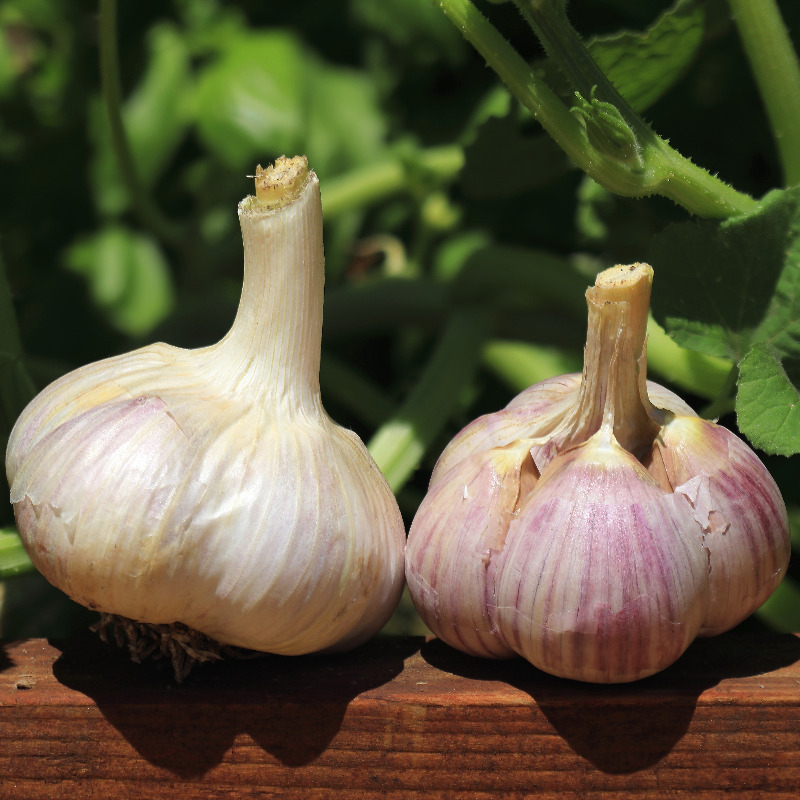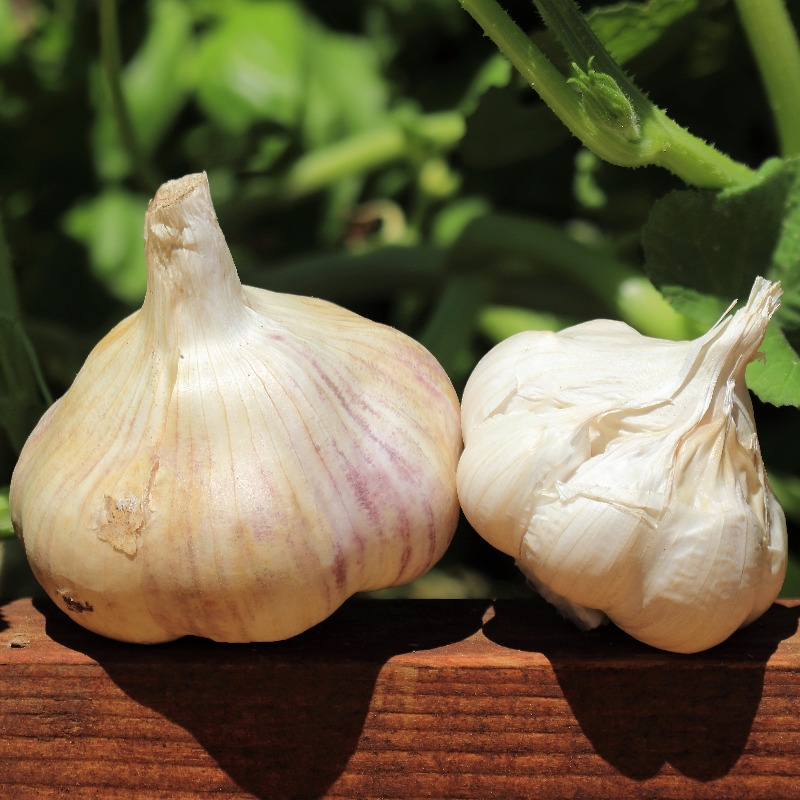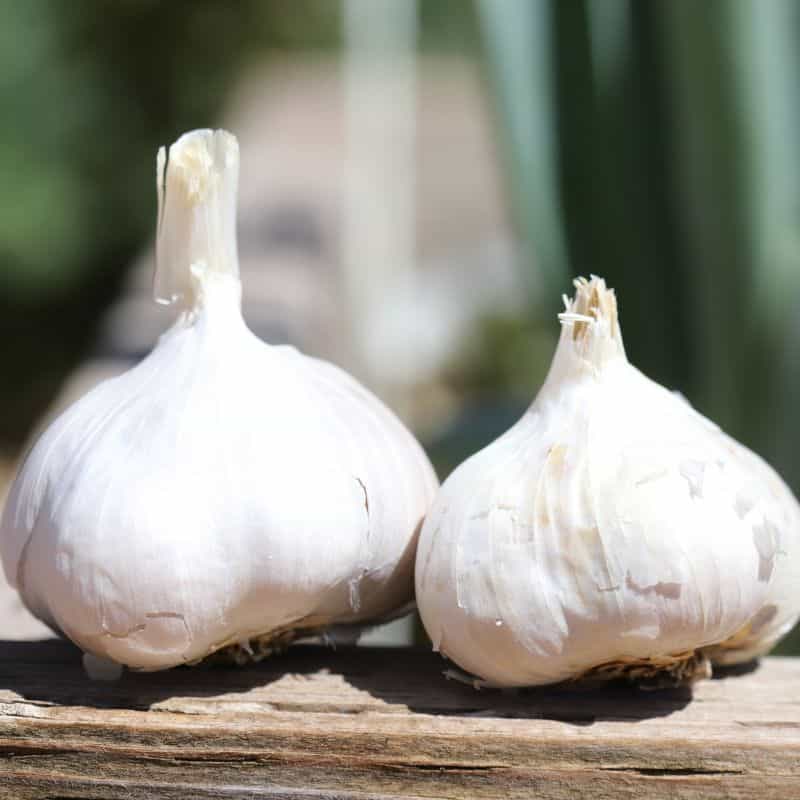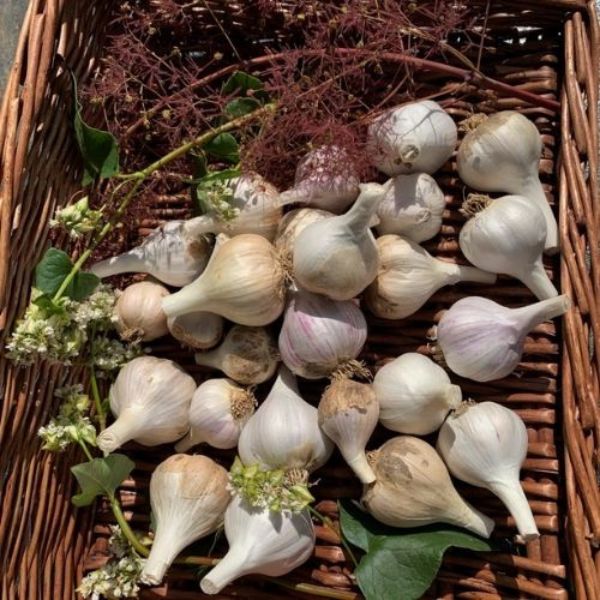About Music Garlic Seed
Hardneck – Porcelain
Music originally came from Al Music, who moved to Ontario, Canada, in 1956 from Bosnia. He had garlic seed that a Polish neighbor had given him, and noticing it grew exceptionally well in Ontario’s soil, he was soon selling his garlic far and wide. He would eventually become a co-founder of the Garlic Growers Association of Ontario.
Known as ‘Ontario garlic’ in Canada, this varietal has become very popular with our northern friends for its excellent cold tolerance and general disease resistance. There are entire festivals in Canada held around this varietal and 90% of garlic grown in Ontario is Music!
With such big cloves, no other garlic is easier to use in the kitchen; plus, Music has been shown to have higher than average levels of allicin, a sulfurous compound found in freshly crushed garlic that has antibacterial and antioxidant properties. Numerous modern studies confirm that garlic has definite antibiotic properties and is effective against a broad spectrum of bacteria, fungi, and viruses.
Music is famous for many reasons, all of which will have you falling in love with this irresistible plant. We prefer Music in everyday cooking because it’s fast and easy, and we love garlic. So when a recipe calls for 2 or 3 regular cloves, we double it with just one clove of Music.
Music Garlic FAQ
Is Music Garlic Hardneck or Softneck?
Music Hardneck garlic is also known as Porcelain garlic and is beautiful. Here are some of the best-known Porcelain Varieties: Armenian, Calabria, Georgian Crystal, Georgian Fire, German Extra Hardy, Italian Red, Kyjev, Leningrad, Majestic, Music, Polish, Reisig, Romanian Red, and Zemo. Organic Music Garlic is an excellent choice for those who want big cloves, big bulbs, full flavor, and the best appearance in their garlic, thanks for choosing our Organic Music Garlic!
How many cloves of garlic are in Music?
Because Music typically grows over three feet high, it does have huge flower stalks which curl and bend into unique displays when dried and added to flower arrangements. Our Organic Music Garlic is grown using only organic methods and is perfect for anyone who wants to add some flavor to their cooking without sacrificing quality or health.
How To Plant Organic Music Seed Garlic
Plant only the largest, undamaged cloves, some cloves might get a nick or two in them from the head cracking process. Save the smaller and damaged cloves for a delicious batch of Toum, its like garlic mayonnaise, yum!
When planting cloves in the soil, place the pointy end up, 3-4 inches deep and 6 inches apart.
How To Harvest Music Garlic Seeds
Spot checks can be done to ensure the doneness of your garlic: lightly and carefully dig around a random bulb, or bulbs, and check its size without digging it up.
Using a hay fork, you can go and loosen the soil 8 to 12 inches away from bulbs, carefully as to not damage the bulbs, and loosen the soil to make it easier to get the garlic up.
Do not remove the excess dirt with water, dirt can be removed later when it’s dried with a soft brush. Be careful to not remove the layers of paper on the outside of the garlic
How To Cure Organic Music Garlic Seeds
Hang bulbs in a well-ventilated, dry area out of direct sunlight and at room temperature, ensuring the temperature does not drop below 45 degrees. The best temperature range is 50 to 55 degrees in the storage area.
If you want to braid the garlic, please watch some Youtube videos on “Garlic braiding,” which takes considerable practice. Garlic curing time varies depending on the weather in your area. You will know when the garlic is adequately cured when the roots and leaves are dehydrated and easily breakable. Most garlic will take 3 to 6 weeks to cure. When done right, it can store for 12 months. You can also freeze garlic but must use it quickly after taking a bulb or two out of the freezer. We tried freezing it but noticed a significant drop in flavor.






Janice Ellison (verified owner) –
This will be my second year planting music garlic. I have had great success with it. I live in ny city . I plant it in a raised bed. My friends are in awe when they see my beautiful harvest. I highly recommend Basaltic farms!
Caleb Schallert (verified owner) –
I just got an LB in the mail. The bulbs were very large and healthy-looking. I am extremely impressed with the quality of this garlic variety.